2013 VOLKSWAGEN JETTA spare wheel
[x] Cancel search: spare wheelPage 258 of 339
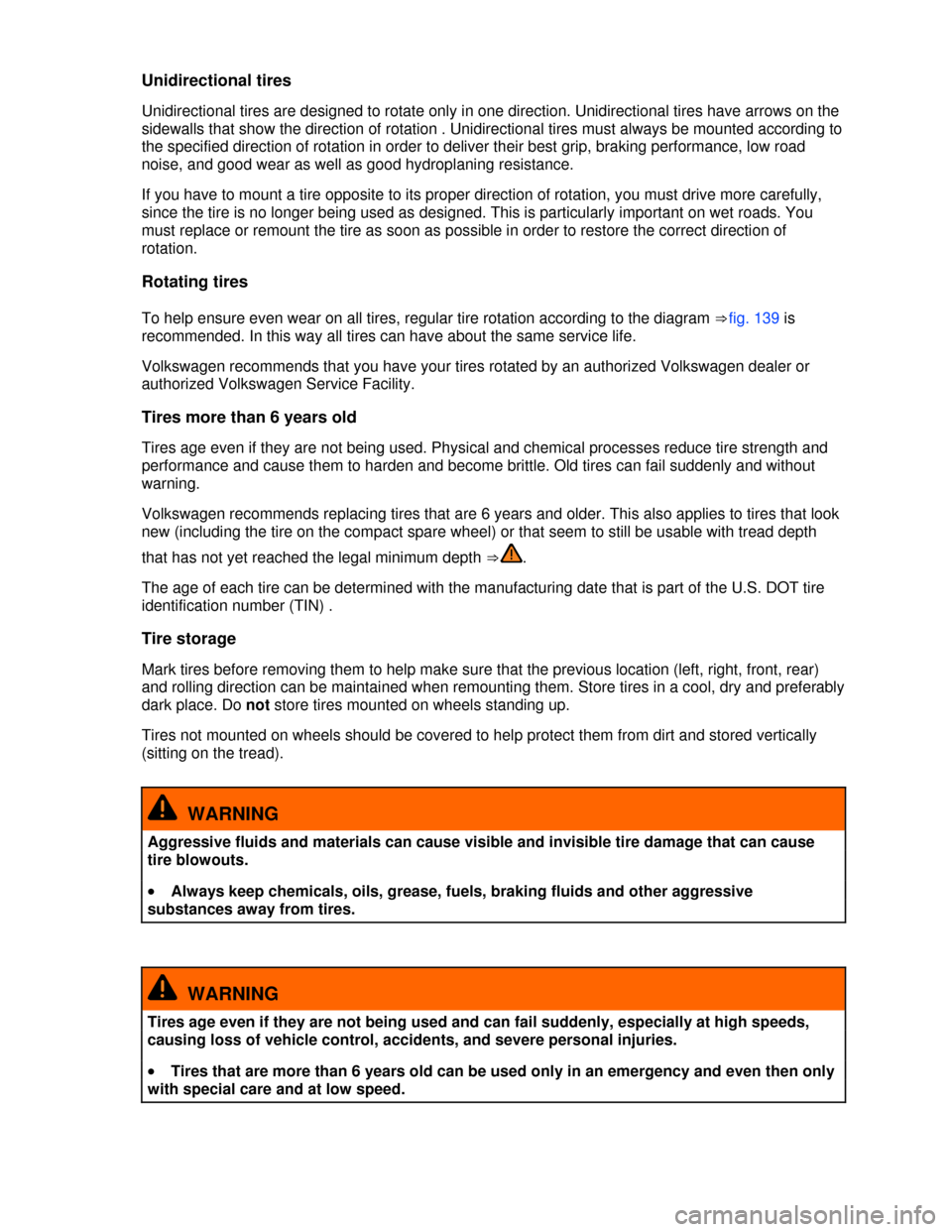
Unidirectional tires
Unidirectional tires are designed to rotate only in one direction. Unidirectional tires have arrows on the
sidewalls that show the direction of rotation . Unidirectional tires must always be mounted according to
the specified direction of rotation in order to deliver their best grip, braking performance, low road
noise, and good wear as well as good hydroplaning resistance.
If you have to mount a tire opposite to its proper direction of rotation, you must drive more carefully,
since the tire is no longer being used as designed. This is particularly important on wet roads. You
must replace or remount the tire as soon as possible in order to restore the correct direction of
rotation.
Rotating tires
To help ensure even wear on all tires, regular tire rotation according to the diagram ⇒fig. 139 is
recommended. In this way all tires can have about the same service life.
Volkswagen recommends that you have your tires rotated by an authorized Volkswagen dealer or
authorized Volkswagen Service Facility.
Tires more than 6 years old
Tires age even if they are not being used. Physical and chemical processes reduce tire strength and
performance and cause them to harden and become brittle. Old tires can fail suddenly and without
warning.
Volkswagen recommends replacing tires that are 6 years and older. This also applies to tires that look
new (including the tire on the compact spare wheel) or that seem to still be usable with tread depth
that has not yet reached the legal minimum depth ⇒.
The age of each tire can be determined with the manufacturing date that is part of the U.S. DOT tire
identification number (TIN) .
Tire storage
Mark tires before removing them to help make sure that the previous location (left, right, front, rear)
and rolling direction can be maintained when remounting them. Store tires in a cool, dry and preferably
dark place. Do not store tires mounted on wheels standing up.
Tires not mounted on wheels should be covered to help protect them from dirt and stored vertically
(sitting on the tread).
WARNING
Aggressive fluids and materials can cause visible and invisible tire damage that can cause
tire blowouts.
�x Always keep chemicals, oils, grease, fuels, braking fluids and other aggressive
substances away from tires.
WARNING
Tires age even if they are not being used and can fail suddenly, especially at high speeds,
causing loss of vehicle control, accidents, and severe personal injuries.
�x Tires that are more than 6 years old can be used only in an emergency and even then only
with special care and at low speed.
Page 261 of 339

Model Engine Tire size Tire pressure
bar psi kPa
195/65 R 15 2.2 32 220
2.0 l/115 hp (85 kW) 205/55 R 16 2.0 29 200
195/65 R 15 2.0 29 200
2.0 l/140 hp (103 kW)
TDI
225/45 R 17 2.3 33 230
205/55 R 16 2.3 33 230
195/65 R 15 2.3 33 230
The Tire Pressure Monitoring System is configured at the factory with the correct tire inflation
pressure applicable for the vehicle model, engine and factory-installed tires. The tire inflation
pressure is listed on the tire inflation pressure label on the driver door jamb ⇒fig. 140. The tire
inflation pressures for the road tires are listed on this label. The inflation pressure for the compact
spare is as specified on the tire pressure label or on a separate label for the compact spare, if there
is one. In the event of a discrepancy between the above figures and the tire pressures listed on the
tire inflation pressure label, the pressures listed on the label are the ones you should use. The listed
pressure applies to all road tires. The Tire Pressure Monitoring System must be recalibrated using
the SET button whenever you change or adjust the cold tire inflation pressures or remove and
remount or change any wheel or tire on the vehicle, even if the reinstalled or replacement wheels
and tires are identical to those that were removed and even if the tire pressure does not change .
Applicable only in Canada
Tire inflation pressure in cold tires
�
Page 264 of 339
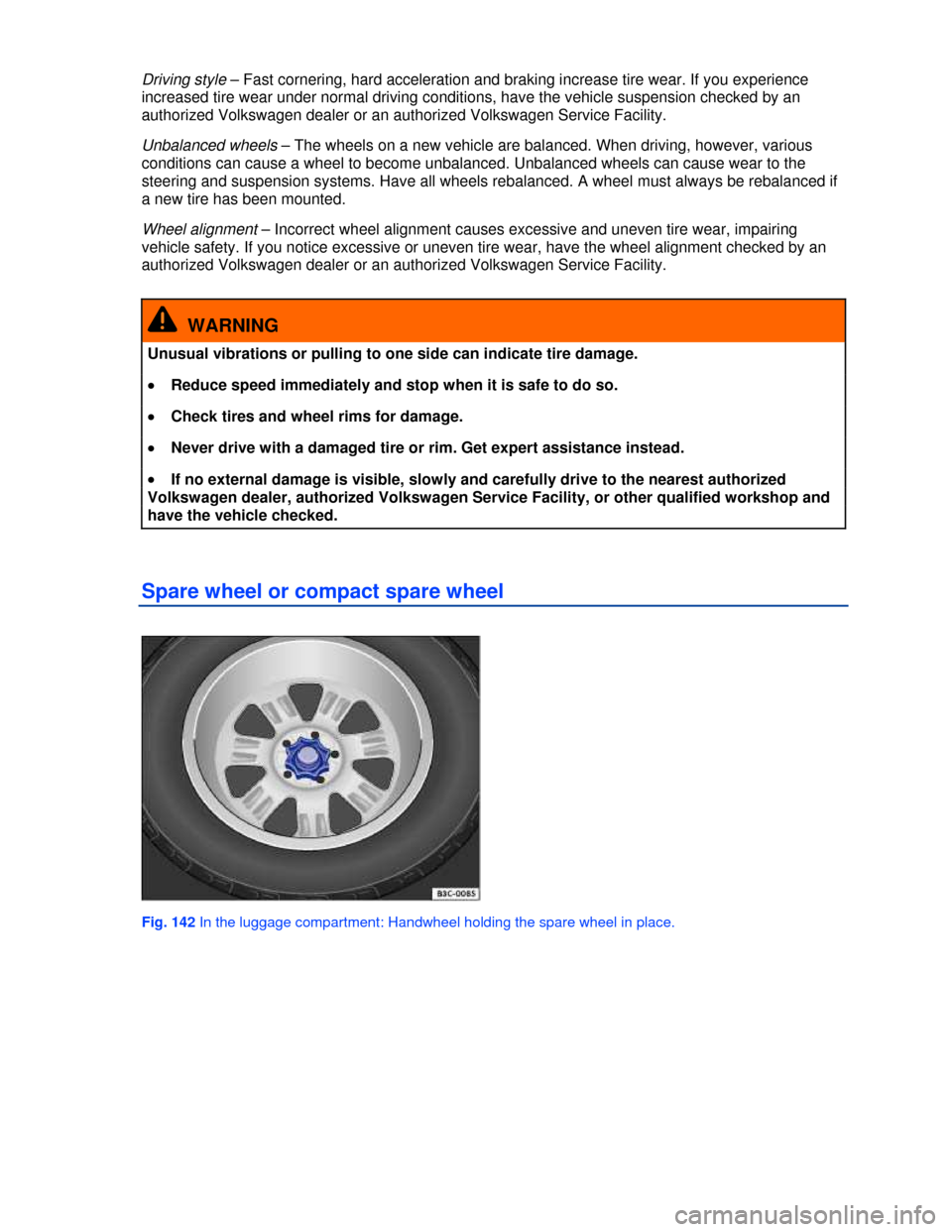
Driving style – Fast cornering, hard acceleration and braking increase tire wear. If you experience
increased tire wear under normal driving conditions, have the vehicle suspension checked by an
authorized Volkswagen dealer or an authorized Volkswagen Service Facility.
Unbalanced wheels – The wheels on a new vehicle are balanced. When driving, however, various
conditions can cause a wheel to become unbalanced. Unbalanced wheels can cause wear to the
steering and suspension systems. Have all wheels rebalanced. A wheel must always be rebalanced if
a new tire has been mounted.
Wheel alignment – Incorrect wheel alignment causes excessive and uneven tire wear, impairing
vehicle safety. If you notice excessive or uneven tire wear, have the wheel alignment checked by an
authorized Volkswagen dealer or an authorized Volkswagen Service Facility.
WARNING
Unusual vibrations or pulling to one side can indicate tire damage.
�x Reduce speed immediately and stop when it is safe to do so.
�x Check tires and wheel rims for damage.
�x Never drive with a damaged tire or rim. Get expert assistance instead.
�x If no external damage is visible, slowly and carefully drive to the nearest authorized
Volkswagen dealer, authorized Volkswagen Service Facility, or other qualified workshop and
have the vehicle checked.
Spare wheel or compact spare wheel
Fig. 142 In the luggage compartment: Handwheel holding the spare wheel in place.
Page 265 of 339
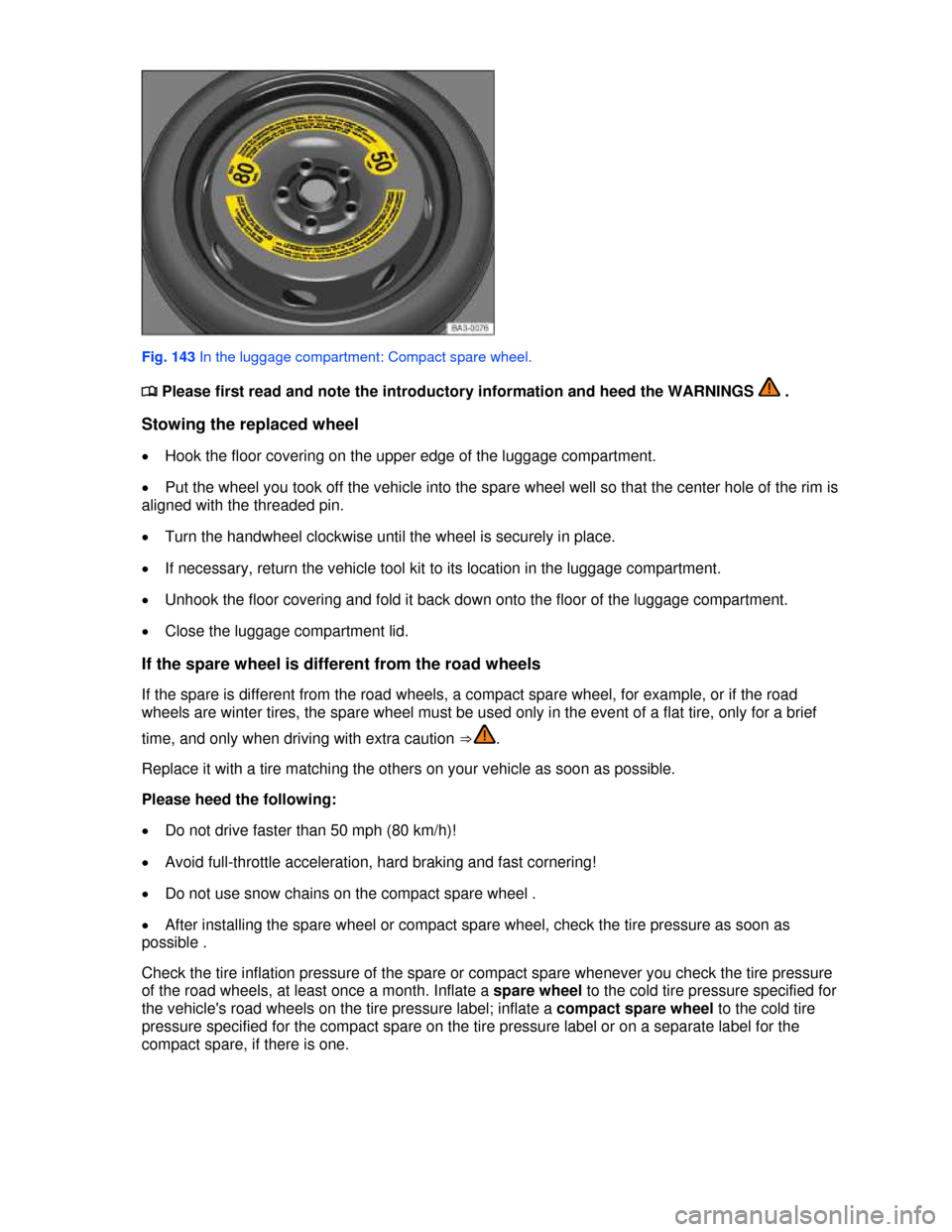
Fig. 143 In the luggage compartment: Compact spare wheel.
�
Page 266 of 339

WARNING
Improper use of a spare wheel or a compact spare wheel can cause loss of vehicle control, a
crash or other accident, and serious personal injury.
�x Never use a spare wheel or compact spare wheel if it is damaged or worn down to the
wear indicators.
�x In some vehicles, the spare wheel or compact spare wheel is smaller than the original tire.
A smaller compact spare wheel is identified with a sticker and the words “50 mph” or
“80 km/h”. This is the maximum permissible speed when driving with this tire.
�x Never drive faster than 50 mph (80 km/h) with a compact spare wheel. Avoid full-throttle
acceleration, heavy braking, and fast cornering!
�x Never drive more than 125 miles (200 km) if a compact spare wheel is installed on the front
axle (drive axle).
�x Replace the compact spare with a normal wheel and tire as soon as possible. Compact
spare tires are designed for brief use only.
�x Regularly check the U.S. DOT Tire Identification Number (TIN) to determine the age of the
compact spare wheel . Tires age even if they are not being used and can fail suddenly,
especially at higher speeds.
�x Tires that are more than 6 years old can only be used in an emergency and then with
special care and at lower speeds.
�x The compact spare wheel must always be secured with the wheel bolts provided by the
factory.
�x Never drive using more than one compact spare wheel.
�x After installing the compact spare wheel, the tire pressure must be checked as soon as
possible .
�x Snow chains cannot be used on the compact spare wheel. If you must use snow chains
and have a compact spare wheel mounted, move the compact spare wheel to the rear axle if a
front tire has to be replaced. The tire taken off the rear axle can then be used to replace the
flat front tire. Be sure you do not change the tire's direction of rotation. Install the snow
chains on the full-sized road tire.
NOTICE
When the spare wheel or compact spare is being used, the TPMS indicator light can come on
after a couple of minutes .
If possible, attach the spare wheel, compact spare wheel, or wheel you took off the vehicle
securely in the luggage compartment.
Page 280 of 339
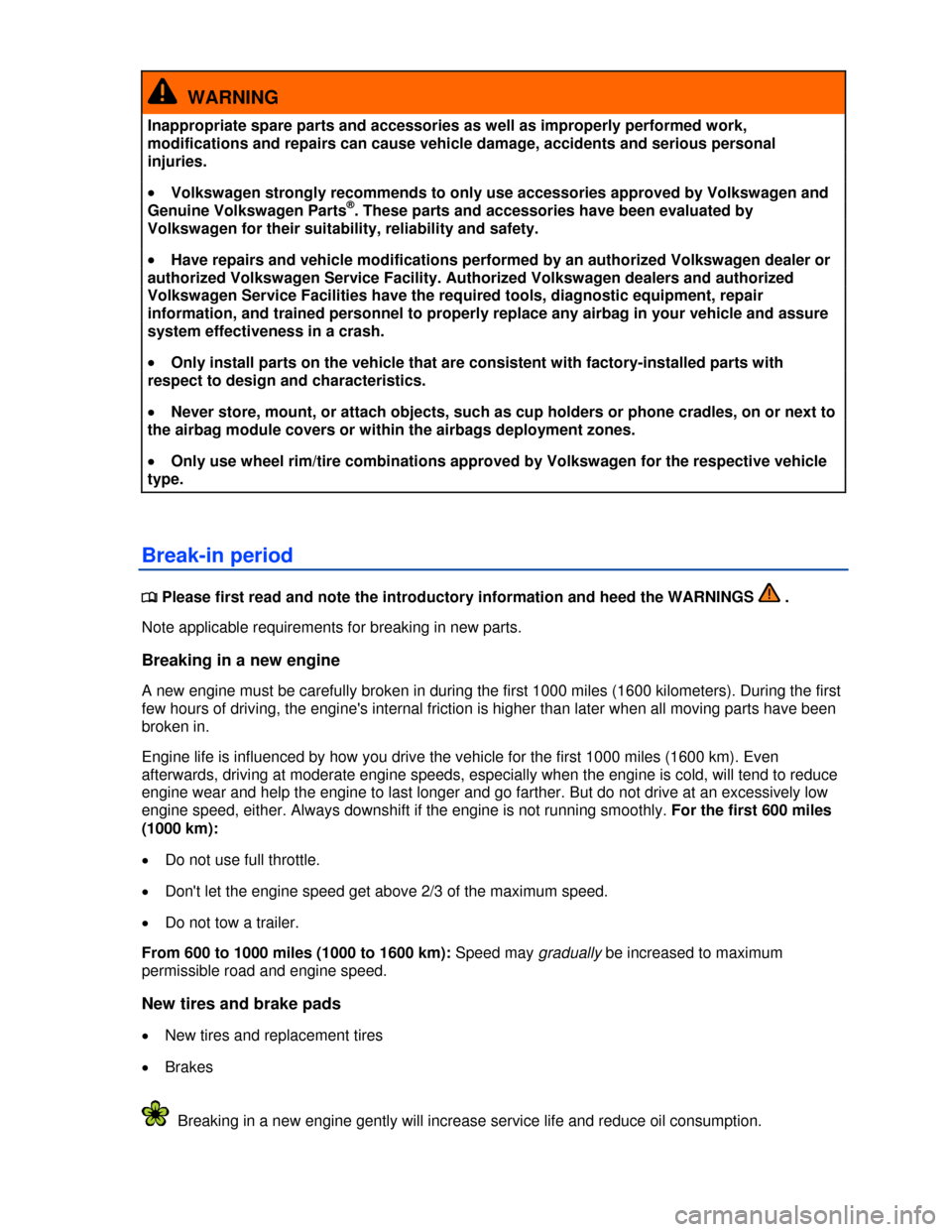
WARNING
Inappropriate spare parts and accessories as well as improperly performed work,
modifications and repairs can cause vehicle damage, accidents and serious personal
injuries.
�x Volkswagen strongly recommends to only use accessories approved by Volkswagen and
Genuine Volkswagen Parts®. These parts and accessories have been evaluated by
Volkswagen for their suitability, reliability and safety.
�x Have repairs and vehicle modifications performed by an authorized Volkswagen dealer or
authorized Volkswagen Service Facility. Authorized Volkswagen dealers and authorized
Volkswagen Service Facilities have the required tools, diagnostic equipment, repair
information, and trained personnel to properly replace any airbag in your vehicle and assure
system effectiveness in a crash.
�x Only install parts on the vehicle that are consistent with factory-installed parts with
respect to design and characteristics.
�x Never store, mount, or attach objects, such as cup holders or phone cradles, on or next to
the airbag module covers or within the airbags deployment zones.
�x Only use wheel rim/tire combinations approved by Volkswagen for the respective vehicle
type.
Break-in period
�
Page 309 of 339
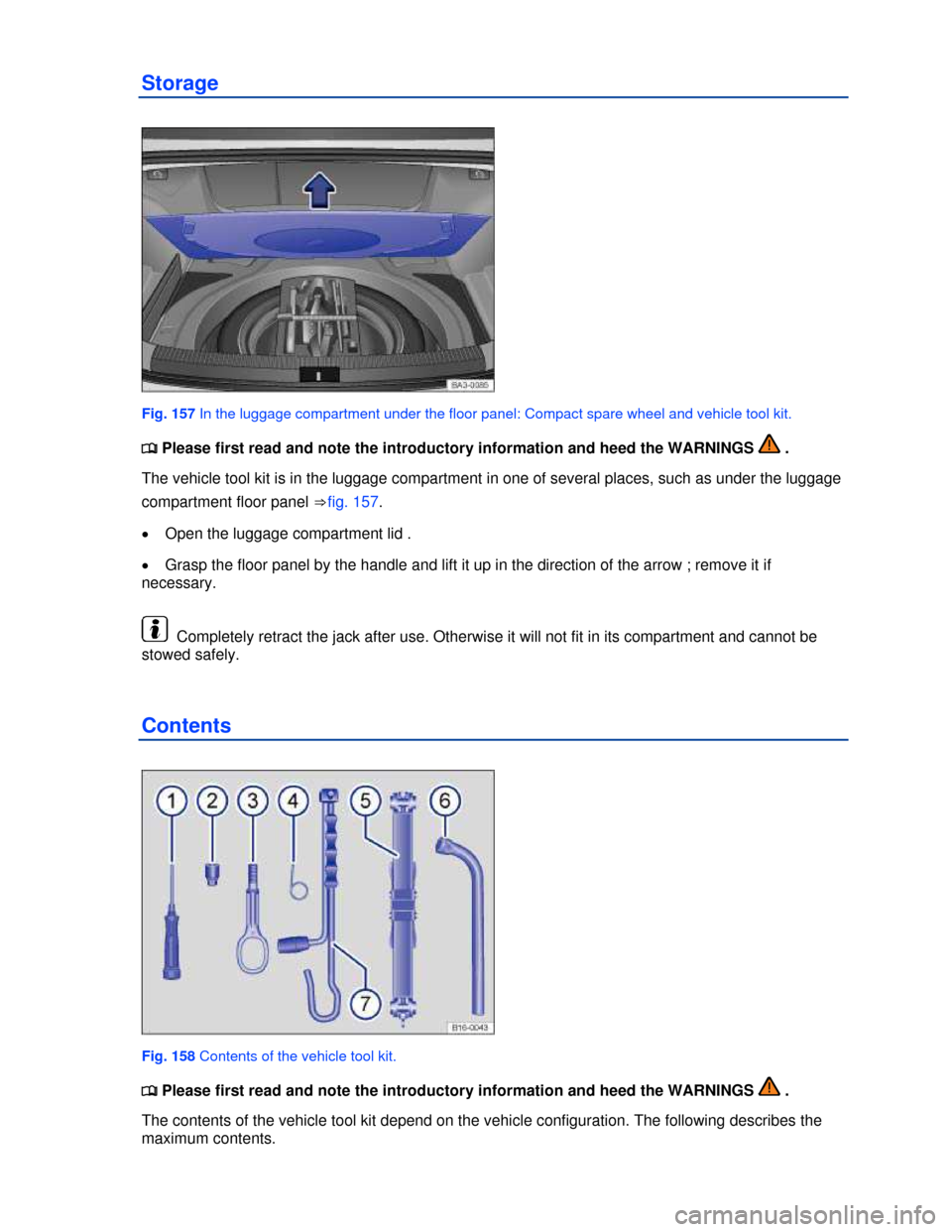
Storage
Fig. 157 In the luggage compartment under the floor panel: Compact spare wheel and vehicle tool kit.
�